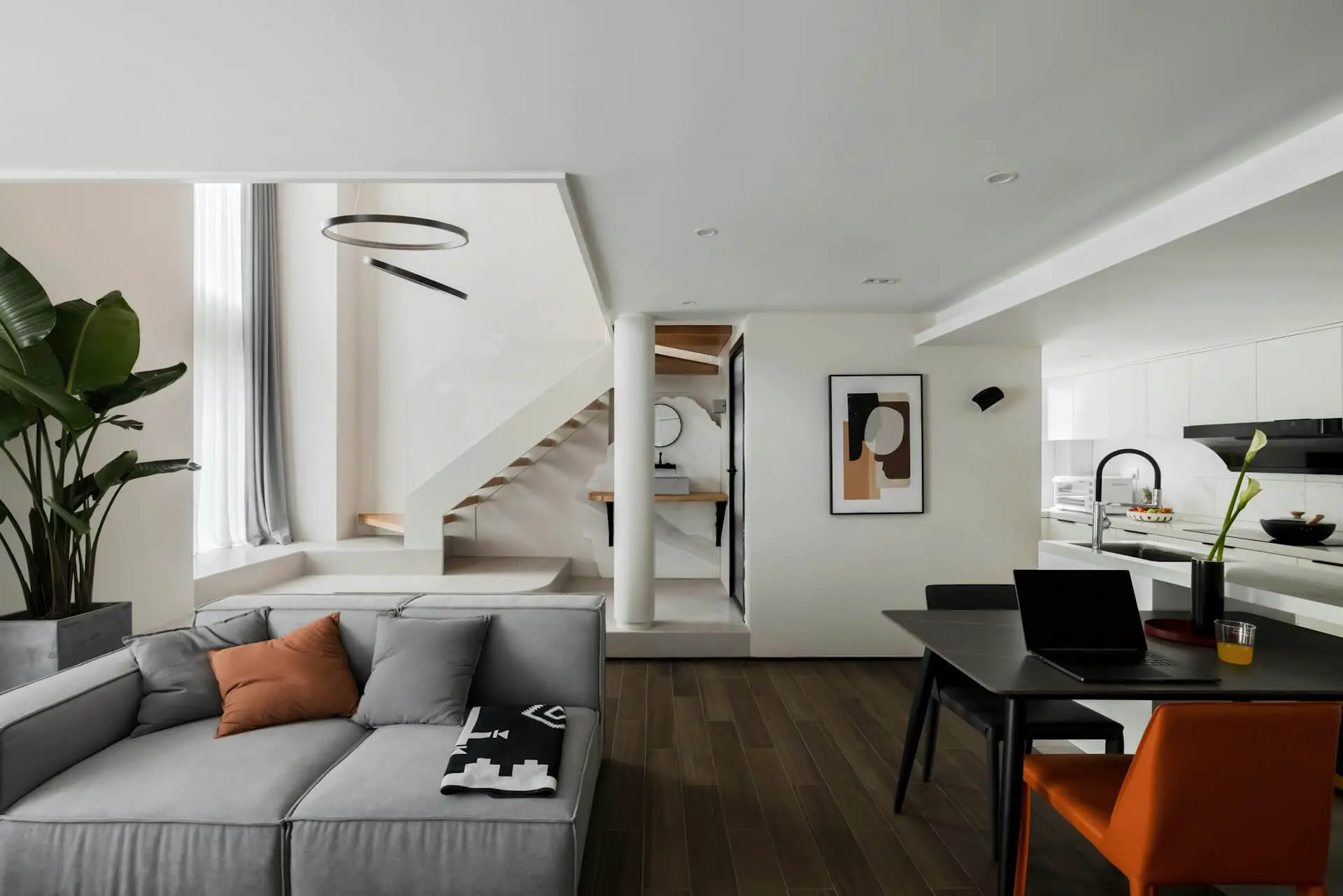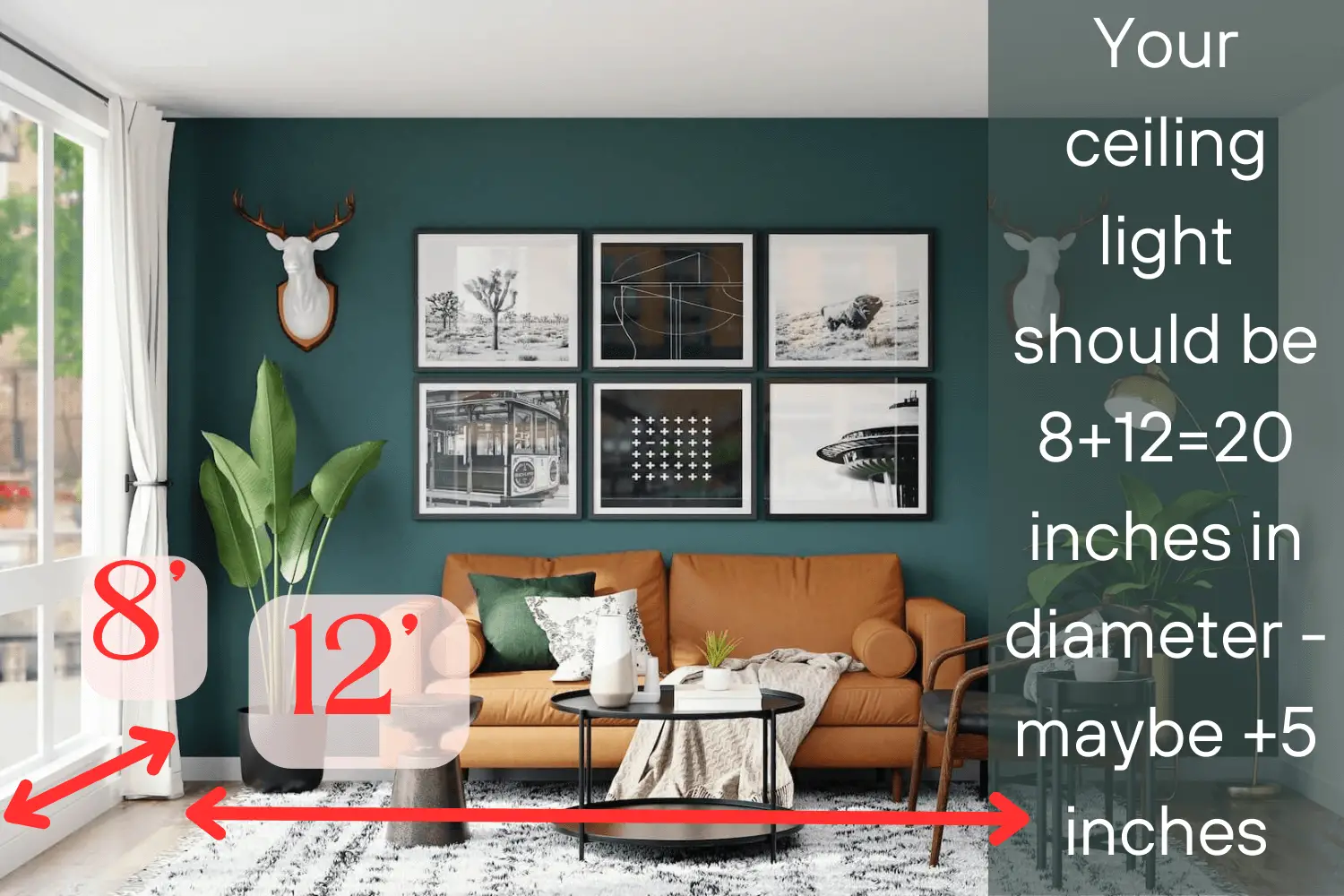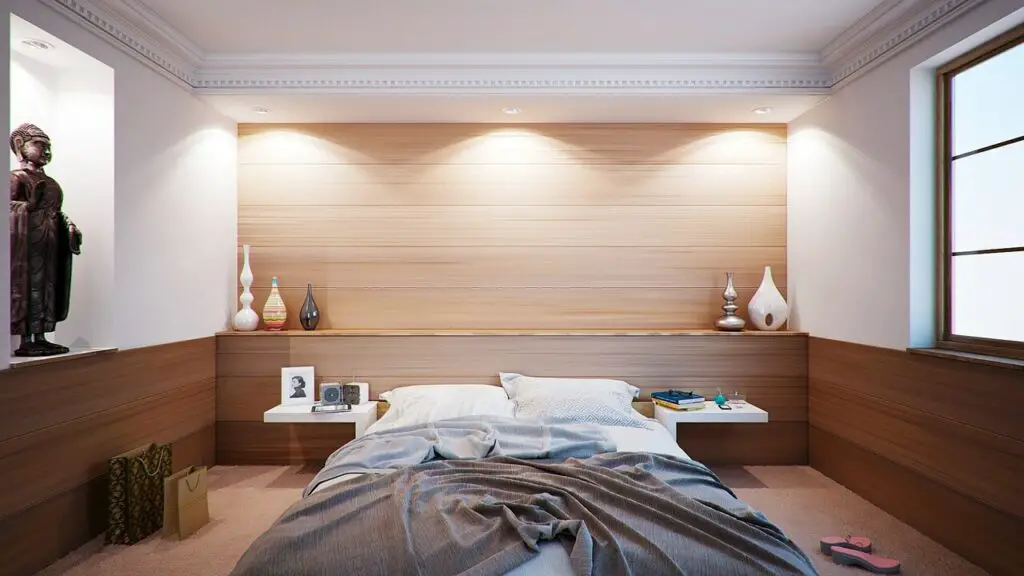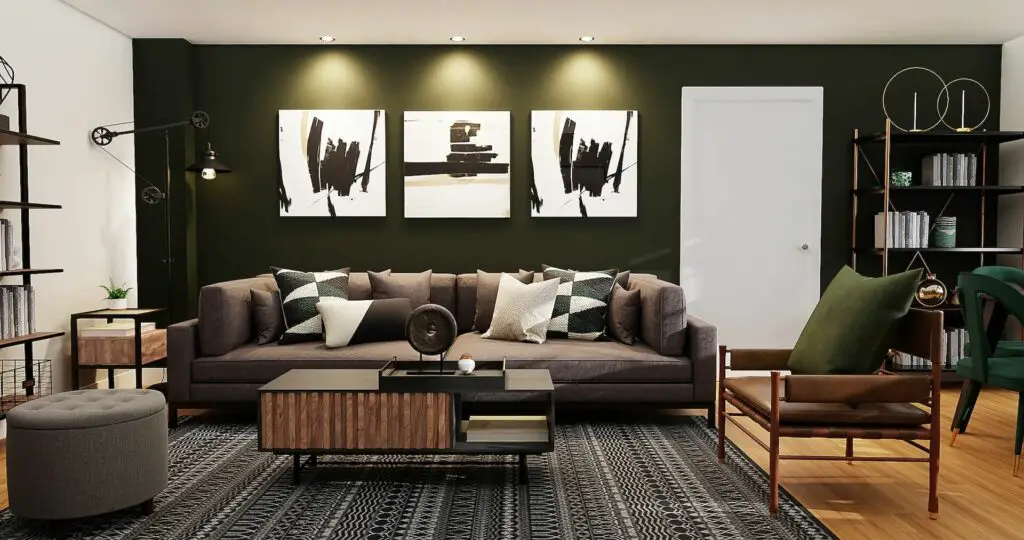Many times, ceiling lights in the living room play a crucial role in defining the ambiance and functionality of the room. As we explore the world of lighting, it’s essential to understand the types of ceiling lights available and how to make the most out of them in your living space.
In this article, we will go through everything you need to know about ceiling lights in the living room – when and how to use them, as well as when to avoid them. We will also see how you can blend them in with the rest of your lighting scheme.

Ceiling lights in the living room fall under the category of ambient light. They are used to illuminate the entire space and make it more functional. However, lighting is much more than simply illumination; it’s about creating an atmosphere.
And how can you use ceiling lights in the living room to create a cozy and relaxing, but at the same time dramatic, atmosphere? First, by following a few simple rules.
What Do We Mean By Ceiling Lights?
Ceiling lights are lights attached to or hanging from the ceiling. The main types of ceiling lights are:
- Chandeliers
- Pendants
- Flush-mount lights
- Semi-flush mounts
- Ceiling fans with light
- Track lighting
Recessed can lights are sometimes considered their own category but can also be classified as ceiling lights.
So basically, ceiling lights are fixtures centered in the middle of the room aiming to provide sufficient ambient light all around the space.
Sometimes they can be decorative, also known as statement pieces, which usually don’t give off enough light and should be supplemented.
Should I Use Ceiling Lights In The Living Room?
Yes, you can absolutely use ceiling lights in the living room unless you belong in one of these categories:
- Your ceiling is too low
- You have too many decorative elements
- You already have a strong ambient light source
Otherwise, go for it. In fact, it’s preferable and many times even necessary.
Ceiling lights in the living room can have many benefits, including the following:
- Overall Illumination: Ceiling lights offer widespread illumination, ensuring that every corner of the living room is well-lit. This is particularly beneficial for activities that require good visibility, such as reading, working, or entertaining guests.
- Ambiance and Mood: The right choice of ceiling lights can significantly impact the ambiance and mood of your living room. You can choose warm-toned lights for a cozy feel or bright, cool-toned lights for a vibrant and energetic atmosphere.
- Versatility in Design: Ceiling lights come in various designs, ranging from chandeliers and pendant lights to track lighting and flush mounts. This variety allows you to select a style that complements your overall interior design and decor preferences.
- Task Lighting: Depending on the type of ceiling lights you choose, they can also serve as effective task lighting. For instance, pendant lights or adjustable fixtures can be positioned to illuminate specific areas, such as a reading nook or a work desk.
- Space Perception: Well-placed ceiling lights can contribute to the perception of space in your living room. Strategically positioned lights create a sense of openness and can make the room feel larger and more inviting.
- Highlighting Decor Elements: Ceiling lights can be used to accentuate specific features or decor elements in your living room, such as artwork, architectural details, or furniture. This adds a layer of visual interest to the space.
- Modern Technology Integration: Many ceiling lights now come with smart technology features, allowing you to control brightness, color, and even set schedules using your smartphone.
- Energy Efficiency: Opting for energy-efficient options, such as LED ceiling lights, not only reduces your environmental footprint but also saves on energy costs in the long run.
Where To Place Ceiling Lights In The Living Room
From chandeliers to track lighting, each type of ceiling light has its ideal placement and sizing. Let’s go through them one by one.
Center of the living room
Chandeliers, flush mount lights, and ceiling fans should almost always be placed at the center of the ceiling to reach each corner of the living room equally.
This is an important step to achieving the perfect ambiance. You don’t want your main fixture to light up one side of the room more and create unflattering shadows.
Sizing
For centered ceiling lights, you should make sure that you get the right size. You don’t want your fixture to be too big or too small.
Pro Tip: The general rule of thumb that we follow is that the sum of your living room width and length in feet should equal the diameter of your fixture in inches.

So for example, if your living room is 8 x 12 feet, your chandelier should be about 20 inches in diameter. I like to go plus about 5 inches in certain cases, so I would choose a chandelier that is 20-25 inches in diameter.
Unfortunately, there is no equivalent formula for the metric system, so you will have to do the conversions yourself.
Height
Similarly, the fixture height in inches should be about 2.5-3 times the ceiling height in feet.
So if your ceiling height is 8 feet, then your hanging light should be 8×2.5-8×3=20-24 inches. However:
Pro Tip: Don’t have your lights hanging more than 7 feet (210 cm) above the ground, so that you avoid head bumps and obstructed visibility!
Over a task area
You can use a pendant over your armchair, a reading nook, or the coffee table even if it’s not centered in the living room. This fixture will act more as task lighting, so it’s better to have a focused beam in addition to the ambiance it provides to the room.
That’s why it’s important to supplement your pendants with other ambient light sources, such as cove lighting. Read my complete guide to lumens in the living room to figure out how to diversify your light sources and achieve the desired lumens.
Track lighting can easily be adjusted to point wherever you want it to, so you can have some track lights pointing at the middle of the living room while others acting as wall washers.
Wrapping up
Ceiling lights in the living room are a very good idea as long as you use them properly.
The most important part is to size them correctly. Follow the instructions above to figure out the perfect diameter and height for your hanging lights. The steps you need to follow are:
- Calculate how many lumens you need for ambient light in the living room (guide here)
- Decide which type of fixture you prefer for your living room ceiling (chandeliers, flush-mount lights, pendants, etc.)
- Figure out exactly where the best placement is to provide a balanced ambiance (or focused task light)
- Buy and install the fixture
And there you have it! You now know everything you should before venturing to install new ceiling lights in the living room. If there is anything I haven’t covered in this guide and you need extra help, drop me a message using the contact form or directly at zach@plottedlights.com. Happy lighting!

